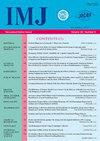中度心血管风险患者的早衰指数
Q4 Medicine
引用次数: 1
摘要
衰老的特点是在一生中器官功能逐渐恶化,既可能发生在生理上,也可能过早发生。随着过早衰老,身体所有生理系统的适应机制都会提前减少,身体和心理活动也会显著减少,这有助于年龄相关病理的早期发展。遗传和表观遗传因素以及环境因素可能是不同衰老率的原因。根据生物学特征不可能准确地确定衰老的开始,因为日历年龄相同的人并不总是与生物学年龄相同。为了确定不同年龄组患者的年龄相关疾病因素与早衰和生物年龄标志物的相关性,根据SCORE量表,对25−44岁和45−59岁的中度心血管风险患者进行了一项研究。预测和预防年龄相关疾病的主要任务是确定决定衰老率和增加年龄相关疾病风险的遗传、分子和细胞因素。心血管危险因素在早衰中的作用已经确定。已经确定,导致生物年龄增加和年龄相关疾病形成的最重要因素是脂质和碳水化合物代谢紊乱以及氧化应激水平,其重要性随着年龄的增长而增加。心血管风险因素和生物年龄之间的关系,用不同的方法估计,它们对端粒长度的影响,已经建立,这使得设计一种算法来确定不同年龄组的早衰标志物,以早期有效地预防代谢相关疾病。关键词:生物年龄,心血管风险,过早衰老,端粒长度。本文章由计算机程序翻译,如有差异,请以英文原文为准。
PREMATURE AGING INDICES IN PATIENTS WITH MODERATE CARDIOVASCULAR RISK
Aging is characterized with a gradual aggravation of organ function throughout life and can occur both physiologically and prematurely. With premature aging there is an early decrease in the adaptive mechanisms of all physiological systems of the body, there is a significant reduction in physical and mental activities, that contributes to the early development of age−related pathology. Genetic and epigenetic factors, as well as environmental ones can be the causes of different rates of aging. It is not possible to accurately determine the onset of old age by biological characteristics, because people with the same calendar age are not always the same as for biological one. To establish the association of age−related disease factors with the markers of premature aging and biological age in the patients of various age groups, a study was performed in the patients aged 25−44 and 45−59 years with moderate cardiovascular risk in accordance with the SCORE scale. The primary task for predicting and preventing the age−associated diseases is to identify genetic, molecular and cellular factors that determine the rate of aging and increase the risk of age−associated diseases. The role of cardiovascular risk factors in premature aging has been determined. It is established that the most important factors that lead to an increase in biological age and formation of age−associated diseases are the disorders of lipid and carbohydrate metabolism and level of oxidative stress, importance of which progresses with age. The relationship between cardiovascular risk factors and biological age, estimated with different methods, their influence on telomere length, that allows the designing of an algorithm to determine the markers of premature aging in different age groups for early and effective prevention of metabolic−associated diseases, has been established.
Key words: biological age, cardiovascular risk, premature aging, telomere length.
求助全文
通过发布文献求助,成功后即可免费获取论文全文。
去求助
来源期刊

International Medical Journal
医学-医学:内科
自引率
0.00%
发文量
21
审稿时长
4-8 weeks
期刊介绍:
The International Medical Journal is intended to provide a multidisciplinary forum for the exchange of ideas and information among professionals concerned with medicine and related disciplines in the world. It is recognized that many other disciplines have an important contribution to make in furthering knowledge of the physical life and mental life and the Editors welcome relevant contributions from them.
The Editors and Publishers wish to encourage a dialogue among the experts from different countries whose diverse cultures afford interesting and challenging alternatives to existing theories and practices. Priority will therefore be given to articles which are oriented to an international perspective. The journal will publish reviews of high quality on contemporary issues, significant clinical studies, and conceptual contributions, as well as serve in the rapid dissemination of important and relevant research findings.
The International Medical Journal (IMJ) was first established in 1994.
 求助内容:
求助内容: 应助结果提醒方式:
应助结果提醒方式:


